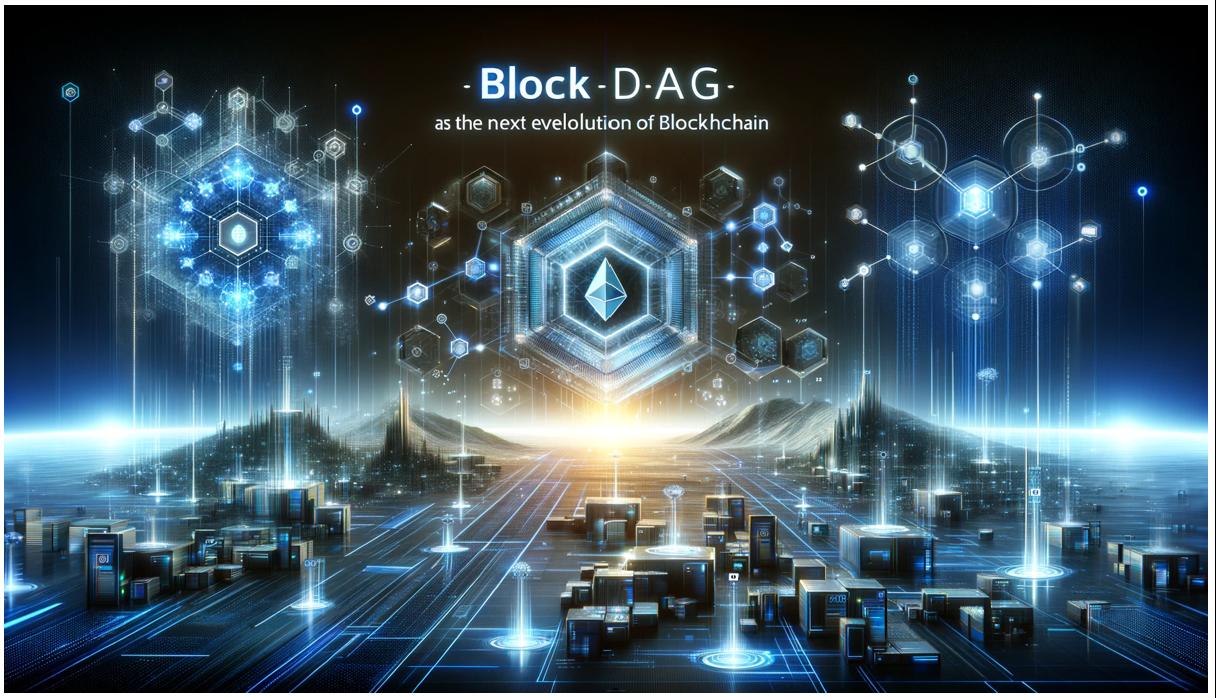- There’s always a push for new technologies in the fast-moving world of financial tech.
- Blockchain, once a groundbreaking technology, is now evolving into something more potent and efficient: BlockDAG (Block Directed Acyclic Graph).
As we stand at the cusp of this technological revolution, understanding BlockDAG becomes crucial, especially for forward-thinking financial platforms like swissmoney, which are pioneering the integration of advanced technologies in their services.
This article explores the next phase in blockchain evolution, BlockDAG, and its promise of faster, more scalable, and more secure digital transactions. It highlights the revolutionary aspects of Directed Acyclic Graphs (DAG) in enhancing blockchain technology and discusses the future potential and challenges of BlockDAG through examples of innovative projects.
How BlockDAG Innovates Traditional Blockchain Technology
BlockDAG protocols, such as SPECTRE and PHANTOM, have been developed to address some inherent limitations of traditional blockchain technology. These advancements bring many benefits, fundamentally changing how transactions are processed, validated, and recorded.
What are Directed Acyclic Graphs (DAG), and Why are They Revolutionary
Unlike traditional blockchains, DAGs do not rely on the concept of blocks. Instead, transactions are recorded as interconnected vertices stacked upon one another. Nodes transmit transactions to the DAG like how they are sent to a blockchain. Let’s explore DAGs and why they are considered revolutionary in blockchain and distributed ledger technologies.
A DAG data structure differs significantly from the traditional blockchain model. In a blockchain, transactions are grouped into blocks, forming a chain where each block is connected linearly to the previous one. In contrast, a DAG is a graph that consists of vertices (transactions) and edges (connections) but does not contain any cycles. This means you can’t start at one vertex and return to it by following a sequence of edges. Each transaction directly links to one or more previous transactions, creating a web-like structure.
Why DAG is Revolutionary
Directed Acyclic Graphs represent a leap in distributed ledger technology by addressing several limitations of traditional blockchain. They offer a more scalable, faster, cost-effective, and energy-efficient way of recording transactions. This makes DAG particularly well-suited for applications that require high transaction throughput and low latency, such as financial services, IoT networks, and supply chain management.
Challenges and Future Outlook of BlockDAG Adoption
BlockDAG protocols offer significant advances over traditional blockchain technology, but their adoption presents unique challenges critical for shaping the future blockchain landscape.
Challenges in BlockDAG Adoption
BlockDAG adoption face multifaceted challenges. The inherent technical complexity of BlockDAG architecture demands a higher level of expertise and resources for development and implementation compared to traditional blockchain systems.
It offers enhanced scalability, and effectively managing network growth remains a pressing issue. Integrating BlockDAG with existing systems poses compatibility challenges, necessitating system upgrades, and seamless interoperability assurance. Regulatory compliance is a concern, given the evolving legal landscape, and ongoing efforts are required to bolster security against cyber threats.
Future Outlook of BlockDAG Adoption
Despite challenges, BlockDAG technology shows promise, offering scalability and efficiency for increased adoption across industries like finance, supply chain, and IoT, with potential collaborations integrating it with existing blockchain projects to fuel dApp innovation and revolutionize cryptocurrency transactions, likely influencing regulatory frameworks for broader adoption.
BlockDAG Projects to Keep an Eye On
As BlockDAG technology continues to evolve, several projects are emerging at the forefront of this innovation. These projects demonstrate the practical applications and potential of BlockDAG in various sectors. Kaspa, Taraxa ($TARA), and QitMeer Network are noteworthy projects worth watching.
Kaspa
Kaspa emerged as a groundbreaking project in the world of blockchain technology, positioning itself as the fastest, open-source, decentralized, and scalable Layer-1 platform globally. It marks its distinction by being the world’s first BlockDAG – a digital ledger that enables parallel block processing and instant transaction confirmation.
Kaspa’s adoption of the GHOSTDAG protocol allows for the coexistence of parallel blocks, thereby avoiding the orphaning of blocks common in traditional blockchain networks. This protocol facilitates a high transaction rate, aiming for up to 100 transactions per second, with the confirmation times dominated primarily by internet latency.
Taraxa
Taraxa stands out as an innovative smart contract platform that is EVM-compatible and based on the t-Graph consensus utilizing BlockDAG. This positions Taraxa as a key player in enabling web3 to solve real-world problems.
Key Features and Capabilities of Taraxa
- t-Graph Consensus: Utilizes BlockDAG, anchor chain, and an asynchronous PBFT to scale blockchain technology efficiently.
- EVM-Compatible Network: Offers seamless deployment of Ethereum dApps, ensuring a broad and versatile application scope.
- Low-Cost Transactions: Taraxa ensures minimal transaction costs, making it an economical choice for users.
- No Network Congestion: Boasts near-instant transaction inclusion with less than 4 seconds for True Finality.
- True Decentralization: A permissionless network that enables anyone to become a validator, even on devices as small as a Raspberry Pi.
QitMeer Network
Qitmeer Network is a blockchain project based on BlockDAG technology that has been gaining attention in crypto and blockchain. BlockDAG, which stands for Directed Acyclic Graph, is a data structure that differs from the traditional blockchain structure, allowing for parallel processing of transactions and consensus. Qitmeer Network is an early BlockDAG concept project that aims to address blockchain’s “impossible triangle problem” by balancing security, decentralization, high performance, and scalability.
The Verdict
BlockDAG technology represents a significant leap forward in the evolution of blockchain. It overcomes key limitations of traditional blockchain, offering rapid transaction confirmation, high throughput, enhanced mining decentralization, and reduced transaction costs. DAGs underpin this innovation, introducing efficiency and scalability to blockchain systems.
While BlockDAG adoption faces challenges like technical complexity and regulatory hurdles, its future is promising. It holds the potential to revolutionize various industries, create innovative collaborations, and improve cryptocurrency transactions. Projects like Kaspa, Taraxa, and QitMeer Network exemplify the practical applications and potential of BlockDAG, ushering in a new era of decentralized and efficient digital transaction systems. As we stand at the cusp of this technological revolution, embracing BlockDAG becomes crucial for advancing financial technology and beyond.



















